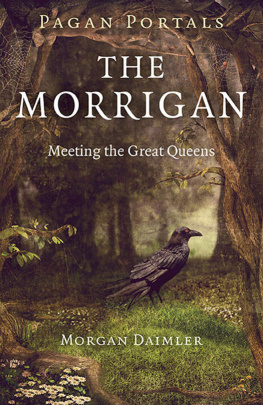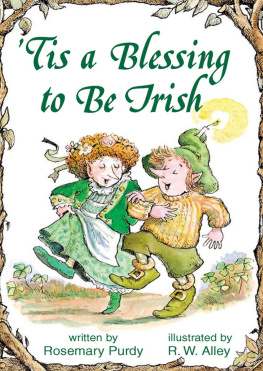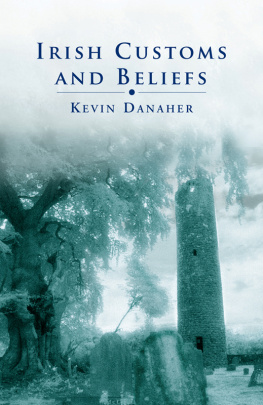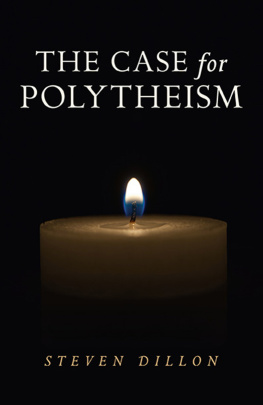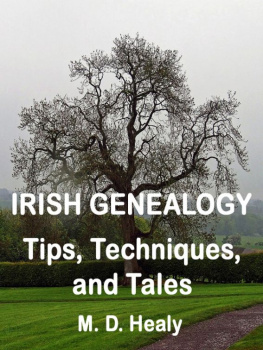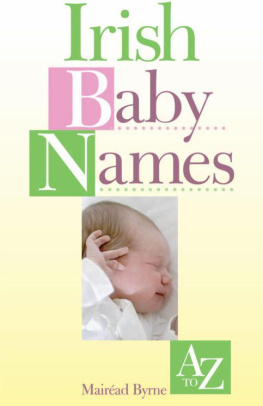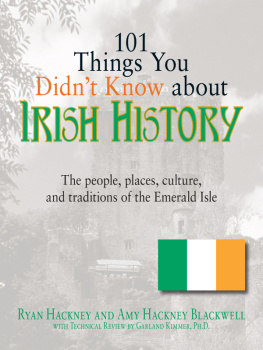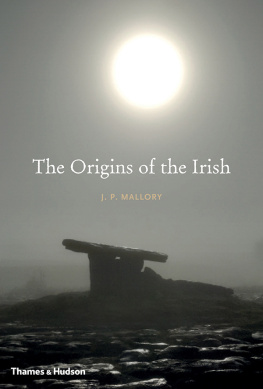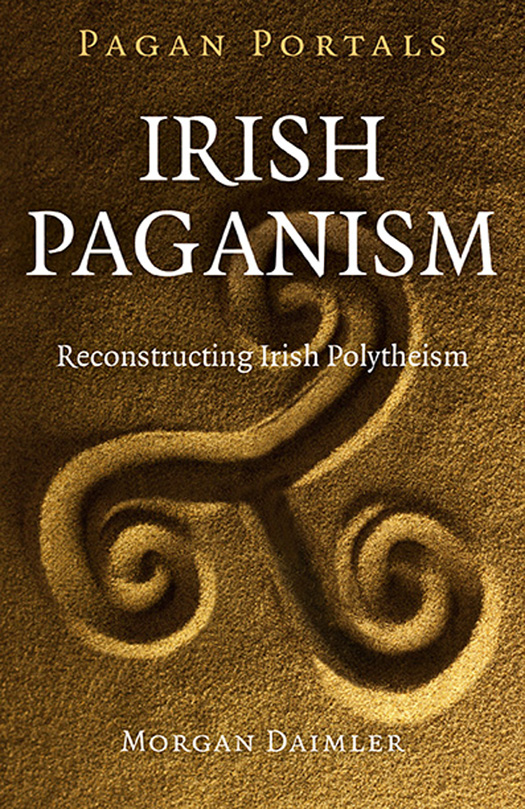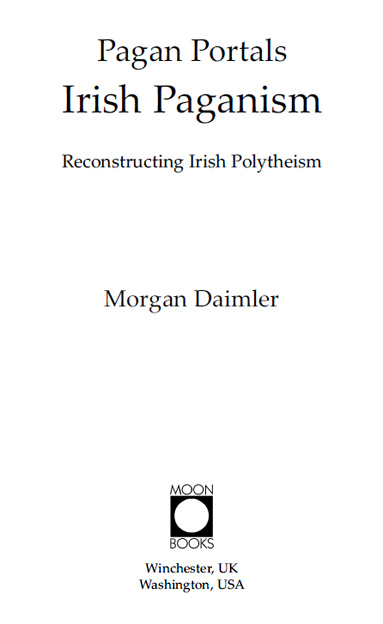WHAT PEOPLE ARE SAYING ABOUT
IRISH PAGANISM
There are very few books out there written on Celtic Reconstructionism and Morgan Daimlers book on Irish Reconstructionism is a welcome addition. The book is a well-researched look at the basics and should serve as a great introductory text for people interested in walking this path who dont know where to start.
Maya St. Clair, editor and contributor to Air n-Aithesc, a peer-reviewed CR journal
Morgan Daimler has written the kind of book I wish Id been able to write 20 years ago. She addresses many of the things Ive been writing about for years, and does so succinctly and cogently. Her approach is clear and practical, and she provides good sources for her work. This is sure to be an essential reference for anyone interested in reconstructing the polytheist practices of ancient Ireland, and of other Celtic cultures.
Erynn Rowan Laurie, author of Ogam: Weaving Word Wisdom and A Circle of Stones
Morgan Daimler has given us an excellent, honest approach to reconstructing Irish Paganism, dispelling common misconceptions and explaining the path in simple, easy-to-read terms. The book is both a superb introduction and a excellent reference to the beliefs, practices and studies of the CR way. The author explains the subject clearly and makes it obvious where the views expressed are hers alone and leaves us to choose what to follow, study and practice. With pronunciation guides in Old and Modern Irish, a recommended reading list and bibliography for further study for the uninitiated, Pagan Portals: Irish Paganism is a must-have book for your book shelf virtual or otherwise! Gary & Ruth Colcombe, from the Celtic Myth Podshow
Irish Reconstructionist Polytheism introduces the reader to a path which is growing in popularity, in a clear, concise and grounded way. The book explains the importance of academic research and balances it with personal experience as well as conjuring the mystical nature of IRP, making the book accessible and relevant to those who are curious and those who practice. For myself, I wish I could have had this book as a resource many years ago.
Jane Brideson, artist and blogger at The Ever-Living Ones Irish Goddesses & Gods in landscape, myth & custom
Morgan Daimlers lucid introduction to polytheist reconstruction as related to Gaelic polytheist traditions is valuable to both beginners and those who have been worshiping the gods for years.
C. Lee Vermeers, author of Teagasca: The Instructions of Cormac Mac Airt, and co-author of the CR FAQs
It is an excellent introduction to the topic, one of the first written, which touches on the main beliefs and themes found among Irish Reconstructionists, in a way that will enable the reader to begin well equipped on an Irish Reconstructionist path.
Segomros Widugeni, formerly Aedh Rua author of Celtic Flame
CONTENTS
Authors Note
I have been pagan since 1991 and following what I would call an Irish Reconstructionist path since about 1994. However, it wasnt until the late 1990s that I found other people with similar interests in combining academia and religion. It was not until into the 2000s that I first heard of the term Celtic Reconstructionist Polytheism and realized that described what I was doing. Part of the reason for this is that there simply werent, and still arent, many resources for this path. People drawn to using a Reconstructionist approach to Irish paganism are left, for the most part, to figure things out on their own and piece together practices as they go. Although there are more online resources today than there were 20 years ago, and a couple of books out now, it remains a religious approach that is mostly left to the individual to figure out. I am hopeful that this is changing and that more and more books will be released that look at Irish Reconstructionism, what it is, and how to do it.
All deity names and general terms in this book are presented in modern Irish; however, Appendix A includes the Old Irish names as well as pronunciations in both languages. There are also quotes given from the source material in the original languages. As with all of my books, citations will be done in APA format.
In writing this book as a brief introduction I am hoping to serve two main purposes: to offer a resource to people who are interested in Irish Reconstructionist Polytheism as a practice and to give those curious about what it is, a good basic understanding of it. I also believe it will serve as a useful resource for anyone interested in Irish Polytheism, even if they are not Reconstructionists.
Morgan Daimler
March 20, 2015
Chapter 1
Basics of Irish Reconstructionist Polytheism
Bennacht d ocus ainde fort
Tin B Cailgne
(Blessing of the Gods and not-Gods on you)
What is Reconstructionism?
Reconstruction is a methodology that uses a variety of sources including archaeology, anthropology, mythology, folklore, and historical texts to reconstruct what an ancient belief or practice most likely would have been like. Using this reconstruction of the old, the belief or practice can then be adapted for modern use. Or, as I like to say, reconstruction is understanding the old pagan religion so that we can envision what it would have been like if it had never been interrupted by foreign influences and had continued to exist until today.
Reconstructionism is most often applied to spirituality, but it can be used for a variety of related practices including traditional non-religious witchcraft. It can also be used for mystic practices used in conjunction with spiritual practices, such as the reconstruction of seership methods within Irish Reconstructionism, or of seidhr within Heathenry. Reconstruction is a method that is applied to a wide array of different ancient pagan faiths including Norse, Anglo-Saxon, Minoan, Egyptian, Irish, Gaulish, and Indo-European to name just a few. It is a method that is both sound and flexible, but which also requires personal engagement and imagination. Because of this, the end results of different peoples reconstruction of the same cultures religion will not be identical, although they should be similar.
In this particular case, the methodology of reconstruction is being applied to Irish Polytheism, hence the name of this approach to Irish paganism. What this means in practical terms is that it is a spiritual structure based on studying archaeology, anthropology, mythology and so on, specifically of Ireland, focusing on the pagan period and any traces of pagan beliefs during the Christian period. Obviously there are certain challenges with this, including the fact that we have nothing written by the pagan Irish themselves, so we must not only reconstruct the old beliefs, but also seek to filter out any foreign influences. Academic material has two main approaches to the subject of pagan Irish beliefs, which are diametrically opposed and tend to be held strongly. The first is the nativist view, which says that Irish mythology and culture were influenced by pre-Christian pagan paradigms and reflect genuine ancient beliefs that were preserved as such by later scholars. The second view is the antinativist, which says that the preserved material we have in the mythology was preserved through Christian mediators who themselves were influenced by both Christian and Classical views and therefore it must be assumed that all preserved material reflects some degree of foreign influence and does not show us genuine pre-Christian beliefs. As an Irish Reconstructionist studying the source material you will encounter both approaches.


